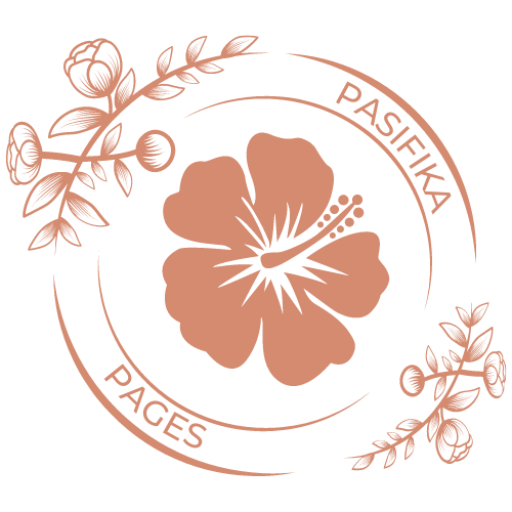In the Samoan language, subject phrases often contain a noun paired with an adjective to describe something. These subject phrases are commonly introduced with the O noun tense marker, which signals the phrase’s purpose of identifying or naming the subject. For example, a simple subject phrase might be, O le ta’avale fou, which translates to “the new car.” This structure gives us a clear understanding of what is being talked about: a specific car (ta’avale) that is new (fou).
While these subject phrases are useful, there is a way to restate them as complete sentences by converting them into a verb-subject structure, known in Samoan grammar as the TAS (Tense, Adjective, Subject) format. The difference between these two forms is that a subject phrase simply names something, while the TAS structure makes a statement about it, usually including some sense of time or state of being. In this case, the adjective becomes the main point of focus, and the sentence describes a state or quality about the subject.
Let’s break down how to restate Samoan subject phrases with adjectives into complete sentences using this TAS format.
Understanding the Components of a Samoan Subject Phrase
The basic components of a Samoan subject phrase are:
- O – The O marker introduces the phrase, signaling that the following words identify a specific subject.
- Le or Se – These are limiters, similar to “the” or “a” in English. Le is used when talking about a specific object or person, while Se is used for non-specific items or people.
- Noun – The person, place, thing, or idea being discussed. For example, ta’avale means “car.”
- Adjective – A descriptive word that provides information about the noun. In our example, fou means “new.”
So, a basic subject phrase like O le ta’avale fou consists of:
- O (noun marker)
- Le (limiter, “the”)
- Ta’avale (noun, “car”)
- Fou (adjective, “new”)
This translates to “the new car,” but in this form, it is not yet a full sentence.
Converting Subject Phrases into Complete Sentences (TAS Format)
To restate the subject phrase as a full sentence, you can use the TAS format:
- Tense Marker – Introduces the sentence and sets the tense. For adjectives, E is most commonly used, which can be thought of as the equivalent of “is” or “are” in English.
- Adjective – Moves to the front of the sentence, making it the focus of the sentence. The adjective is now acting like a verb, describing the subject.
- Subject – The noun being described comes at the end, completing the sentence.
Using the example O le ta’avale fou, the restated sentence would be:
- E (tense marker)
- Fou (adjective, “new”)
- Le ta’avale (subject, “the car”)
Thus, O le ta’avale fou becomes E fou le ta’avale, which means “The car is new.” Now we have a complete sentence where the adjective describes the subject in a way that conveys a complete thought.
More Examples of Restating Samoan Subject Phrases
Let’s look at more examples to further understand this transformation:
- O le fale tele (The big house)
E tele le fale (The house is big)
In this example, O le fale tele is restated as E tele le fale, which now translates to “The house is big.” Here, the adjective tele (“big”) is moved to the front, and the tense marker E introduces the sentence.
- O le maile vave (The fast dog)
E vave le maile (The dog is fast)
Here, the subject phrase O le maile vave (“the fast dog”) is restated as E vave le maile (“The dog is fast”). The adjective vave (“fast”) takes on a more active role in the sentence, making the phrase a complete statement about the dog.
- O le tagata matua (The old person)
E matua le tagata (The person is old)
This subject phrase is restated as a sentence by moving the adjective matua (“old”) to the front and adding the tense marker E. The result is E matua le tagata, or “The person is old.”
- O le sami loloto (The deep ocean)
E loloto le sami (The ocean is deep)
Similarly, O le sami loloto (“the deep ocean”) becomes E loloto le sami (“The ocean is deep”), turning the phrase into a complete sentence.
Practice Translating
Here are some phrases to practice restating:
- O le vai mālū (The cool water)
- O le va’a tele (The big boat)
- O le manu vave (The fast bird)
- O le la’au umi (The tall tree)
- O le mea mālū (The soft thing)
When you restate these into complete sentences, the adjectives will move to the front, and you will use E as the tense marker. For example, O le vai mālū becomes E mālū le vai (“The water is cool”).
Conclusion
Learning to restate Samoan subject phrases with adjectives into TAS format is a valuable skill that helps in creating complete, meaningful sentences. By focusing on the adjective and introducing a tense marker like E, you can transform simple noun phrases into statements that describe the subject in a more dynamic way. Practicing this transformation will improve your understanding of Samoan sentence structure and give you more versatility in speaking the language.





